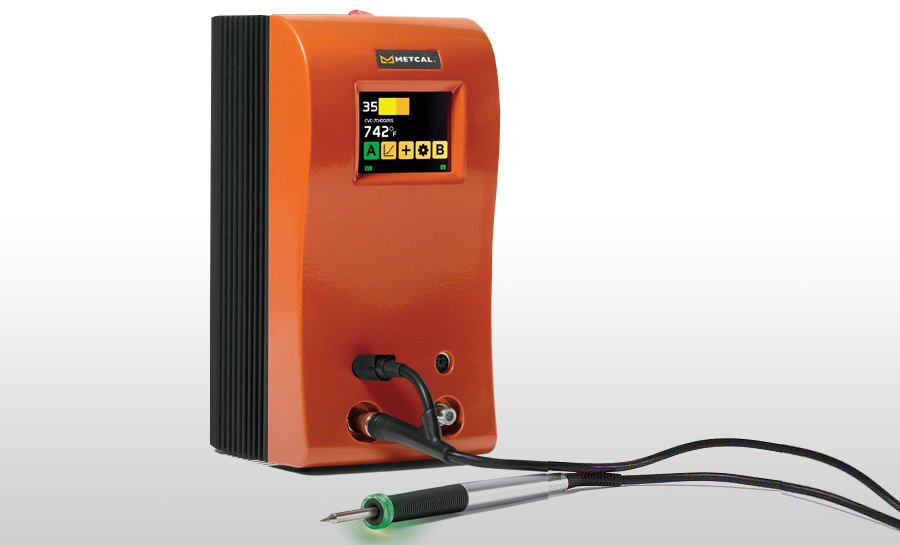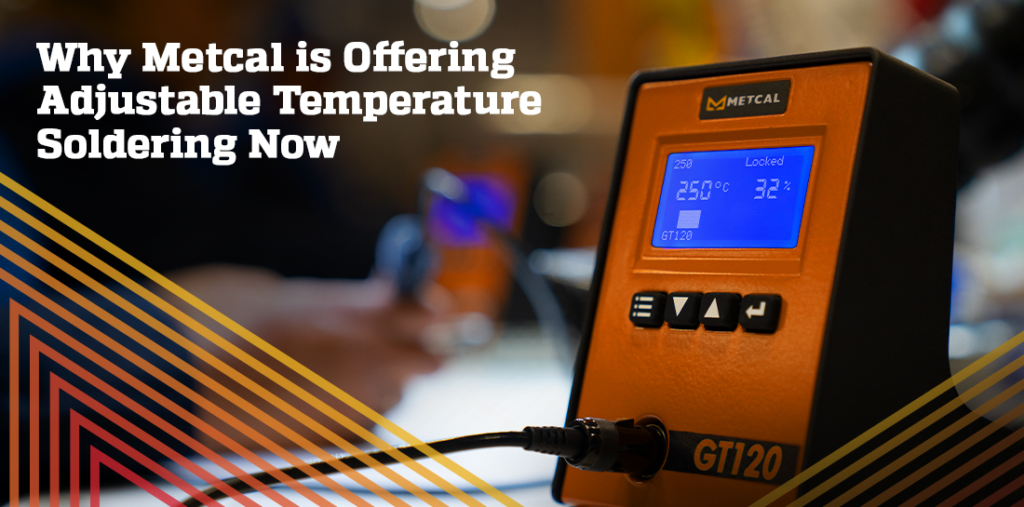This article was originally published in the May 2019 issue of U.S. Tech and can also be found online at US-Tech.com.
Hand soldering is the process of joining two metals using a filler material, known as solder. The solder is typically a metal alloy with a lower melting point than the metals being joined. This is sometimes confused with welding, but the main difference between soldering and welding is that in soldering the joined metals are not melted.
This process has been in use for millennia, as experts agree that hand soldering was employed as early as 5,000 years ago in Egypt. The use of soldering as an assembly process grew in popularity around 4,000 years ago when tin was discovered as a flowable metal joining material.
This technique for soldering quickly expanded from the Mediterranean region and was introduced to the Roman Empire, Swiss, and Hungary. The soldering process has improved from culture to culture and from generation to generation. Yet, despite all this experience, today’s electronic assembly still suffers from manufacturing issues caused by this age-old process for joining metals.
Standards for Safety
The electronics industry has implemented many standards over the years to ensure that the products we build meet our customer’s needs for safe and reliable operation. As manufacturers, we must allow for profits to be achieved to keep our production line running and our investors happy. One of our largest overhead items is the cost to provide industry-standard training to assembly operators who practice the art of soldering daily. Typically, these standards are based on the visual appearance of the final soldering joint.
Many operators will only gain this expertise after years of experience and many training sessions. That being said, hand soldering is still an art and dependent upon human behavior. Unfortunately, as humans we are fallible and despite training, practice, and inspection, we can deliver products with latent defects.
As an example, in December 2015, Ford Motor Company issued a recall for 313,000 older cars for headlight failures linked to 11 crashes. The automaker recalled 2003 to 2005 Ford Crown Victorias and Mercury Grand Marquis to replace the lighting control module. The modules’ solder joints could crack and interrupt power to the headlights, increasing the risk of a crash at night.
The reliability of solder interconnections depends on intermetallic compound (IMC) formation which is a function of time and temperature. The reflow peak temperature and the time above liquidus are two critical variables in determining the IMC thickness. The IMC is necessary for good solder joint interconnection and its presence provides a bonding layer between the solder and component termination and/or board substrates. Solder joint reliability can be affected by both the lack of an IMC layer and too thick an IMC layer. If a thick IMC layer was formed within the solder joint, its brittleness can cause solder joint reliability concerns.
Connection Validation
The Connection Validation (CV) soldering system was designed by Metcal to allow for the repeatable creation of the intermetallic layer of the solder joint and to provide feedback to the operator when the solder joint is acceptable. In addition, the CV system can also warn the operator when the tip and operating temperature that he or she has selected will not create the proper intermetallic. This creates a closed-loop system to assist the operator to meet the correct soldering parameters of an acceptably soldered connection.

Data is the fuel of today’s factories. One of the many features of CV is its ability to collect data of the hand soldering operation and the performance of the soldering cartridge and its operating temperature on the assembly being soldered. Some of the parameters that can be captured and stored in the CV cartridge include: cartridge part number, lot code, serial number, idle tip temperature, solder joint count, total run time, actual tip temperature and time during each solder event, and ESD detection, adding up to process control and traceability of the final product.
Data collection is the process of gathering and measuring information about variables of interest in an established, systematic fashion that enables one to answer stated research questions, test hypotheses, and evaluate outcomes. Many communication protocols have been developed over the last six decades and are still being used today.
OEMs collect proprietary data and encrypt it the way they specify. In some cases, this was done to discourage users from using equipment from other OEMs. Since data structure is different, the limitation of sharing data across devices creates difficulty to draw conclusions using data analytics methods. The existing architecture does not support the current trend of automation and data exchange to drive manufacturing, maintenance, inventory tracking, and other types of activities across the entire manufacturing network.
With the introduction of the Internet of Things (IoT), advanced analytics and machine learning are changing the landscape of industrial machine interaction. The data captured is only valuable if it is able to be shared. A common language is needed.
Speaking the Same Language
In 2017 the IPC began developing an international standard for communication from machine to machine called Connected Factory Exchange (CFX). IPC-CFX is an electronic manufacturing industry-developed standard forming the foundation and backbone of Industry 4.0 applications. IPC-CFX simplifies and standardizes machine communication, while also facilitating machine-to-business and business-to-machine solutions.
Since it is an industry standard, there will be no proprietary format and/or encryption as everyone would share it in the public domain. An NDA is no longer required. If machines are CFX-compatible, then they can communicate with each other. Information can be shared. Manufacturing will no longer be required to run different applications to collect data. All data can be stored in a central database.
Last September, at the CFX proceedings, large machine manufacturers presented how their equipment was able to communicate. But this was mostly proprietary information designed to assist the technician on how to best run that machine — replace a reel, add solder paste, etc.
When it was Metcal’s turn to present, we showed how the new Connection Validation hand soldering system can communicate with the IPC-CFXserver on the status of the simple soldering iron, and at the same time provide information on the quality of the solder joint as well as the output of the operator. This simple solder joint demonstration was considered revolutionary by the participants and the creators of the CFX standard. Not one of the industry experts had ever considered the possibility of monitoring the hand soldering process.
Questionable solder joints remain a constant source of printed circuit board failure. Typically, the reliability of the connection relies on visual inspection, operator influence, and skill. Each factor involved with the formation of a solder joint is an element of risk and can affect either throughput or reliability. Mitigating the risk in hand soldering requires the identification of these factors — and with the CV system — a means to control them.
The time to correct defects is during the initial soldering process. After the soldering process is completed, we as an industry cannot rely on inspections performed by humans or machines to confirm solder joint formation to a standard. The highest point of risk is during the soldering operation and is the formation of the intermetallic compound. Visual inspection and operator skill do not verify the correct formation of the intermetallic compound within the solder joint. It is time to consider a closed-loop soldering system with CFX compatibility for process control and traceability.
The overall success and quality of IPC-CFX is a testament to the innovation and growth taking place in the electronics industry. For the first time ever, all machines of all types from all vendors are able to use a single language, protocol, and encoding method to eliminate all custom interpreters and any possibility of error to share real-time data.

